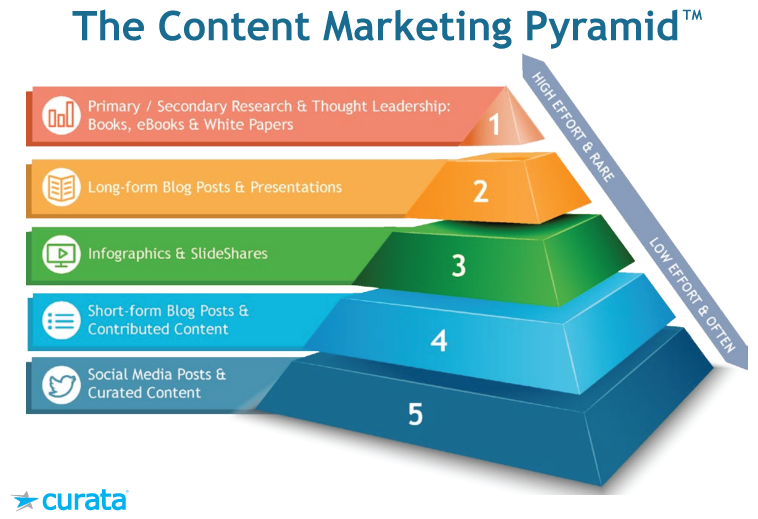6 Web Analytics Tools to Level up Your Site
There are more website analytics tools than you’ll ever require. So here’s a list of the only six tools you’ll need based on the type of data you should be tracking. Matomo tells you where your visitors...

Web analytics tools allow you to collect, analyze, and report website data. If you’re a marketer or a business owner looking to improve your site, these are the kind of tools you need. There are more website analytics tools than you’ll ever require. So here’s a list of the only six tools you’ll need based on the type of data you should be tracking. Matomo tells you where your visitors come from, what pages they visit, and what they do on them. Ethically. Matomo is a Google Analytics alternative designed with data privacy in mind. It protects your data owner and your visitors’ privacy. Professionals value Matomo for its lack of data sampling (you can analyze all of your data), open-source code, on-premise hosting, and breadth of features. When visitors come to your site, they perform all sorts of actions that can show you how effective your website is as a marketing tool. Matomo will help you answer questions such as these: In other words, Matomo provides fundamental website data that’s hard to do digital marketing without. You may also need it for legal reasons. Google Analytics is illegal in some EU countries (or at least its default version), in which case you’ll need a GDPR-compliant alternative like Matomo. Some website events are more important than others: sales, form completions, downloads, specific page visits, etc. To monitor them, you can set up the “Goals” feature. Matomo allows you to track various data related to your goals. You’ll know how many people completed the goal, where they came from, how performance changes over time, and which channels contribute to the goals the most. You can also assign revenue to your goals for easier ROI tracking. You can visit Matomo’s live demo to get a feel of the product. You can use the basic features of Matomo for free if you host it on your server. The cloud-hosted version starts at $23/month and depends on your monthly traffic. You can also get premium add-ons such as A/B testing, funnels, or heatmaps. This is something worth comparing to third-party tools that offer the same functionality. Ahrefs is a set of tools SEOs and marketers use to outrank the competition and get more organic traffic from search engines. Getting a specialized tool for this kind of traffic is crucial because it’s usually one of the biggest sources of traffic to websites. Plus, this source is free, passive, and consistent. SEO requires specialized tools like Ahrefs. You won’t find the right kind of data about your site and your competitors’ sites anywhere else. Ahrefs uncovers: On top of organic traffic, Ahrefs will also show you where your competitors funnel paid traffic, which keywords they bid for, and what ads they use. With Ahrefs’ Site Explorer, you can get insights into how your competitors and other successful sites drive organic traffic. For example, the Content Gap report automates the time-consuming process of finding the keywords that your competitors rank for, but you don’t. This way, you can get ideas for new content based on the keyword research your competitors have already done. Ahrefs starts at $99/month, and you can get two months free if you pay annually. If you’re just starting out in SEO, Ahrefs offers a range of free tools to help you take your first steps. A notable one is Ahrefs Webmaster Tools, which allows you to check SEO performance for the sites you own. Google Search Console (GSC) is another SEO tool on our list. You’ll need it on top of any other SEO tools you’ll use. It’s free and allows for integrations with numerous other web analytics tools, including Ahrefs. To get data on your performance in Google search–related products straight from the “bot’s mouth.” GSC is the place where you can get the most accurate data on a handful of SEO metrics like website traffic, click-through rates, and index coverage. On top of that, GSC holds a few unique features: Note That said, you’ll likely need other SEO tools too. This is because GSC has its limitations when it comes to the availability of keyword and link data. To illustrate, here’s a comparison with Ahrefs Webmaster Tools (AWT). One of the popular use cases for GSC is using the click-through rate data, found in the “Search results” report. This metric shows the number of clicks that your webpages received divided by the number of times they were shown. So when you see a keyword ranking high but generating poor CTR, you can see the page that ranks for this keyword and try to optimize its title. Google Search Console is free. HubSpot is one of the most popular CRMs in the market and, lately, it’s been expanding on marketing tools. One of the main benefits of using HubSpot is that it offers analytics, content creation, and automation functionality “under one roof.” So while you’re analyzing website data, you can easily jump to another tool in the suite to put your insights into action. Moreover, some teams value HubSpot’s product family because it offers seamless operations between marketing, sales, and customer service. If you’re doing lead generation and lead nurturing, you probably can’t go wrong with HubSpot. Without any coding skills, you can set up a site, start blogging, and create landing pages for lead magnets. Then you can engage your leads in email workflows without the need for another tool. The analytic capabilities you get in the package aren’t the most advanced on the market, but they’re enough to get a decent insight into your performance. What’s more, as the company has been adding more free tools and features, HubSpot may be a good choice for small businesses. While testing the analytics features in the free version, I found the dashboard feature super useful. With different features on board, you certainly don’t want to click through the entire tool to find the right report. A customizable dashboard solves that because you get all your important reports in one place. You can start with the basic functionality of HubSpot for free. Premium plans start at $18/month (for an annual subscription) and largely depend on your contact list size. Visual Web Optimizer offers everything you’d need to launch experiments on your website: VWO takes the guesswork out of web design and copywriting. It allows you to test out ideas for virtually every element of your website to see how they impact clicks, signups, and other goals. No coding skills required. VWO allows you to quickly hop in and test pretty much any kind of idea for improving your website—and that’s obviously great. But what made an impression on me is how VWO enables you to be scientific and organized about your experiments (which is great for collaboration too). I could document observations as they happened, regardless of any ongoing tests. When I got an idea of how to address my observations, I could create a hypothesis and link it to any kind of experiment. VWO also provides a neat planning tool (kanban). I can just leave my hypotheses in the backlog and let someone pick the one that should be tested. VWO offers a free plan. Premium plans start at $173/month for the core tool and depend on the number of users you want to track per month and optional tools. How fast does your website load? This is the question best answered by GTMetrix. It’s one of the most feature-rich site speed tools on the market, offering crucial metrics (such as Core Web Vitals) and automated monitoring. Starting from the top, why do you even need to monitor your site speed? There are a couple of reasons: Now, why this tool and not just any site speed tool? Here are some good reasons: By the way, you can test any site with this tool—useful for agency-side marketers. Even a free GTMetrix plan allows for automated performance monitoring. You can also set specific conditions for an email alert to trigger. GTMetrix offers a free plan. Premium plans are offered on a monthly and annual basis, starting at $10.67/month if you go for an annual subscription. Frequently asked questions about tools used for web analysis. The main benefit is improving website performance. Thanks to the data made available by web analytics tools, you can identify areas that need improvement, such as conversion rates, speed, or search engine optimization. Web analytics also provide valuable market data: who your visitors are, where they are coming from, and what content interests them. Generally speaking, yes. They usually don’t require coding skills and can be set up without effort. That said, there may be some learning curve regarding different types of data and how to use them. Here are some of the most actionable data types: Good web analytics tools offer functionality based on the most important aspects of site performance. They make it easy to spot things that need improvements, such as organic traffic. Improvements are usually made to the content, design, or technical aspects of the website. When it comes to the privacy of visitor data, find a tool that is compliant with the laws in your country (e.g., GDPR, CCPA). Some tools offer two-step authentication and SSO to further protect your data. In the case of general website performance tools, there is sometimes the option to host them on your server. This is considered a good way to make sure only you can access your data. Identify areas where web analytics tools can help your business, consider reviews and preferences in your team, and get tools that fit within your budget. If you’re not sure how web analytics can help, consider trying out free tools first. There are some helpful additions to web analytics tools, e.g., aggregators like Klipfolio, Cyfe, or Google Data Studio. They will allow you to get a quick overview of the key web metrics and see them next to other important data your company tracks. Got questions? Ping me on Twitter or Mastodon. 1. Matomo – General website performance
Why you need it
Feature highlight

Pricing
2. Ahrefs – All-in-one SEO
Why you need it
Feature highlight

Pricing
3. Google Search Console – Performance data from Google
Why you need it

Feature highlight

Pricing
4. HubSpot – Marketing automation
Why you need it
Feature highlight
 A quick dashboard I created. Shows data from different tools in one place.
A quick dashboard I created. Shows data from different tools in one place.Pricing
5. Visual Web Optimizer – A/B testing and UX insights
Why you need it
Feature highlight

Pricing
6. GTMetrix – Quick speed test on any website
Why you need it
Feature highlight

Pricing
What are the benefits of using web analytics?
Are web analytics tools easy to use?
What type of data can you collect with web analytics tools?
How do I use web analytics data to improve my website?
What about data privacy?
How to choose the right tool?
Final thoughts

 Lynk
Lynk 






























